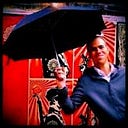This Ted Talk by @gibbuloch really stands out as how the techniques of social entrepreneurship can be applied even by people who don’t have their own business but are working within organisations.
It made me reflect back on our youth staff group “Greenhouse” and theapplication we wrote for an equality awards.
It shows that the techniques and approaches used in social action — from community organising to asset-based community development, via positive deviance — are as relevant in the workplace as they are in the community. Several of the most active people in Greenhouse are very involved in civic activity, some more in charity work, others more in campaigning and others in the creative arts. We each brought these experiences into developing activities with young people using constructive challenge through creative collaboration — or what you could call positive disruption! From an age group that is traditionally seen as “hard to reach”, we became “hard to avoid”
As one of my fellow members in the group states “We want to make it known that we are the future and should be trained to lead.”
There will always be people who are more connected to the decision makers than others and that was no different with us, but with that opportunity needs to come responsibility — understanding “when and how different people can contribute in a way that suits them” and accountability — providing different open spaces that they can hold us to account (trust me, this motivates you to act on what people have nominated you to do!)
We weren’t challenging those in power so much as the systems they were responsible for. This is why they supported us to design a talent management programme which uncovered & developed hidden leadership skills in young people ranging from personal assistants to project managers.
“Everything we do is focused on supporting young people to lead themselves on making sure their peers get more respect and recognition for their skills, better opportunities to develop themselves and others and build a stronger sense of belonging and self esteem for themselves and their peers”
This made me think that the visualisation that Tessy Britton created would be very useful to overlay onto the dynamics of the workplace as a community. What do you think?
How about bringing social entrepreneurs into the organisation, like when developers go into residence (@codeforamerica) to disrupt the way local government approaches technology or when hairdressers are recommended to advise councils (@demos)?
